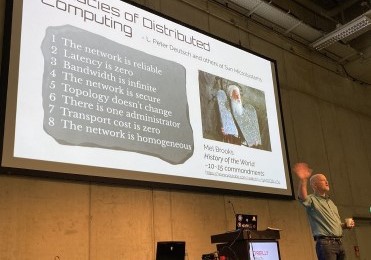
Services

- Consulting
Advisory
Assessment of your team’s migration toward cloud native, Kubernetes, and distributed architectures. Let’s look at your maturity model and uncover strategies to increase your delivery.

- Teaching
Workshops
Workshops that range from hours to days. Together we create a workshop agenda to help your team move forward.

- Teaching
Presentations
Organizing a conference, meetup, or company event? Choose from my portfolio of topics or let’s create a new topic for your audience.







